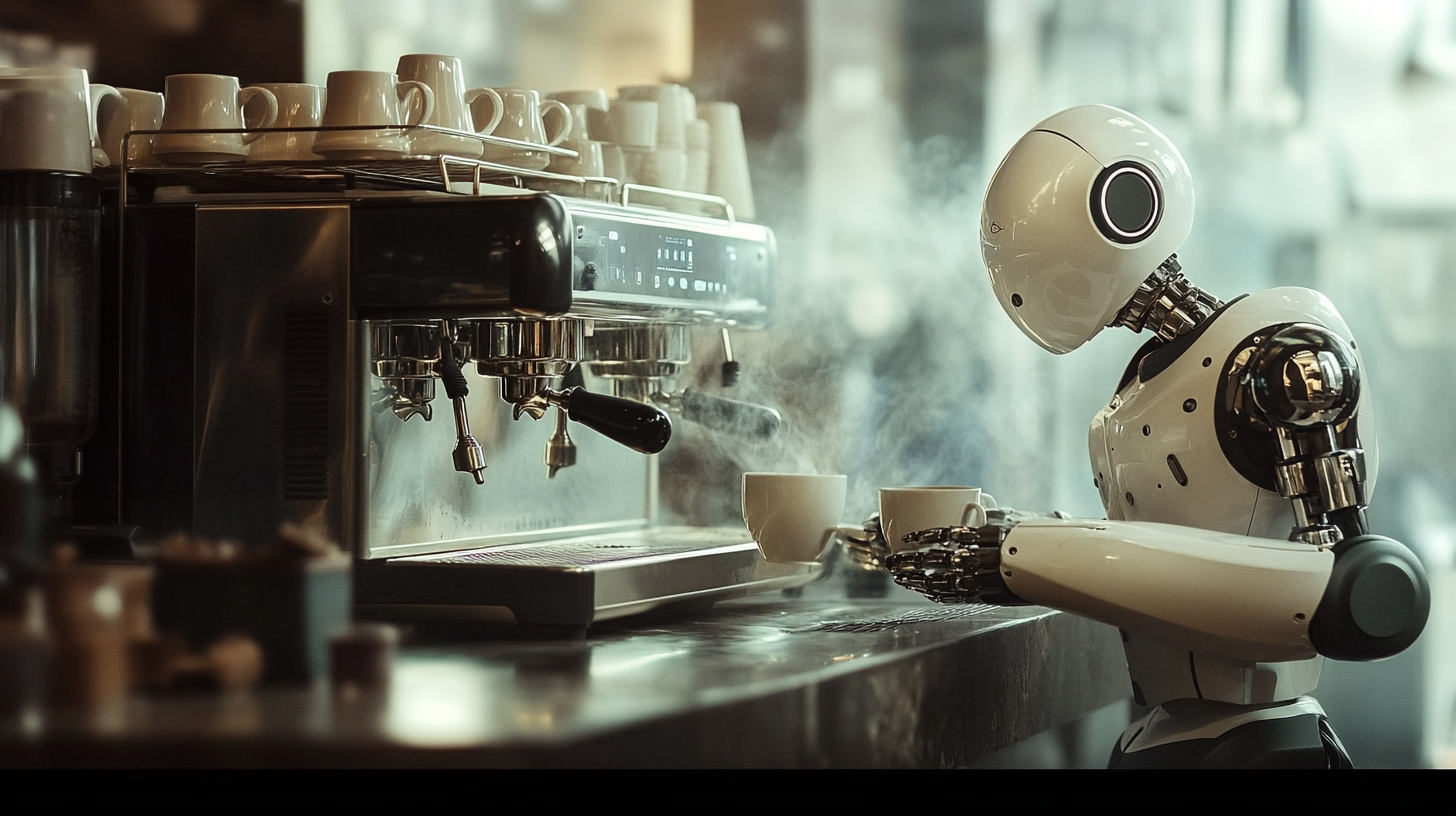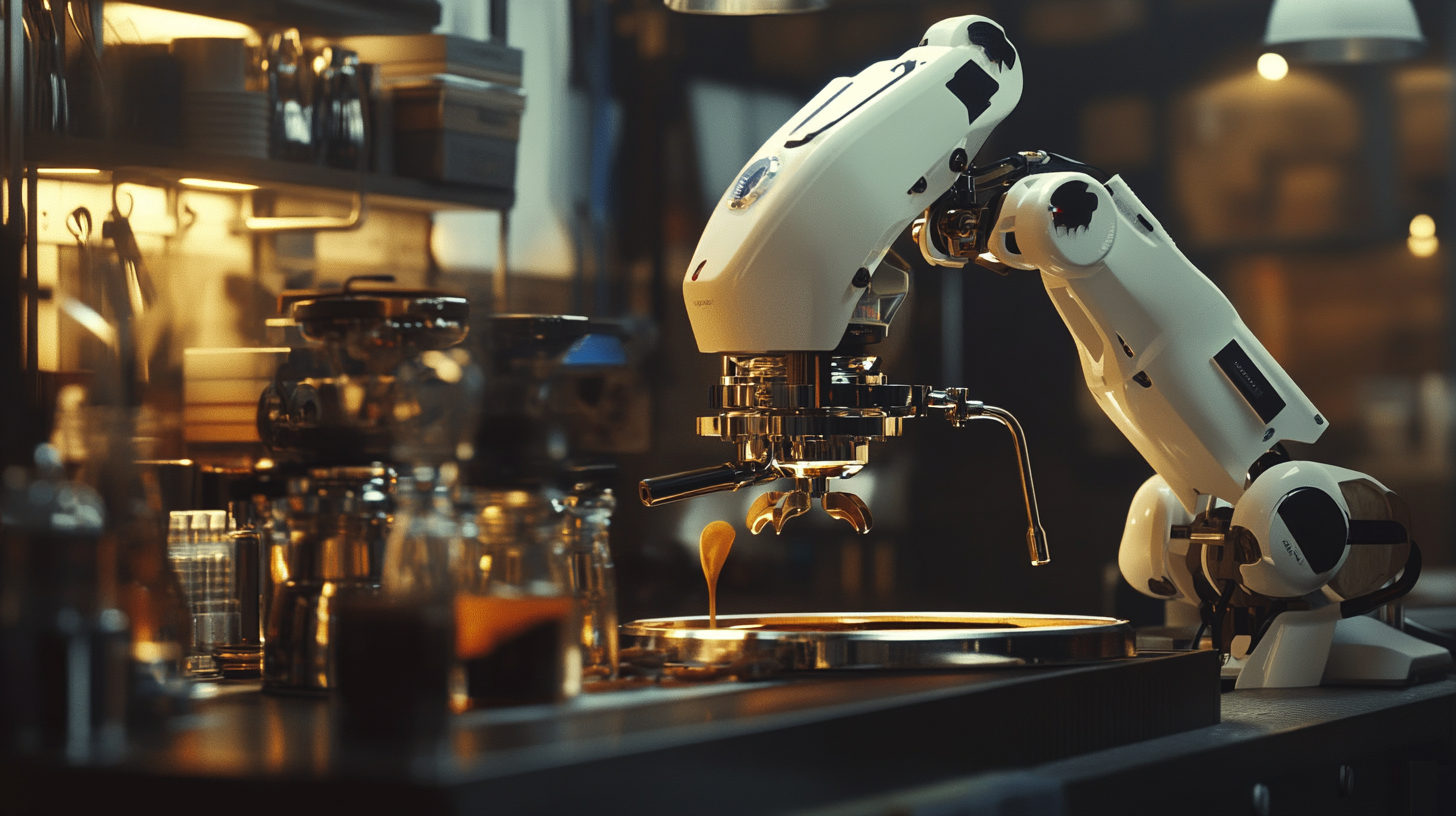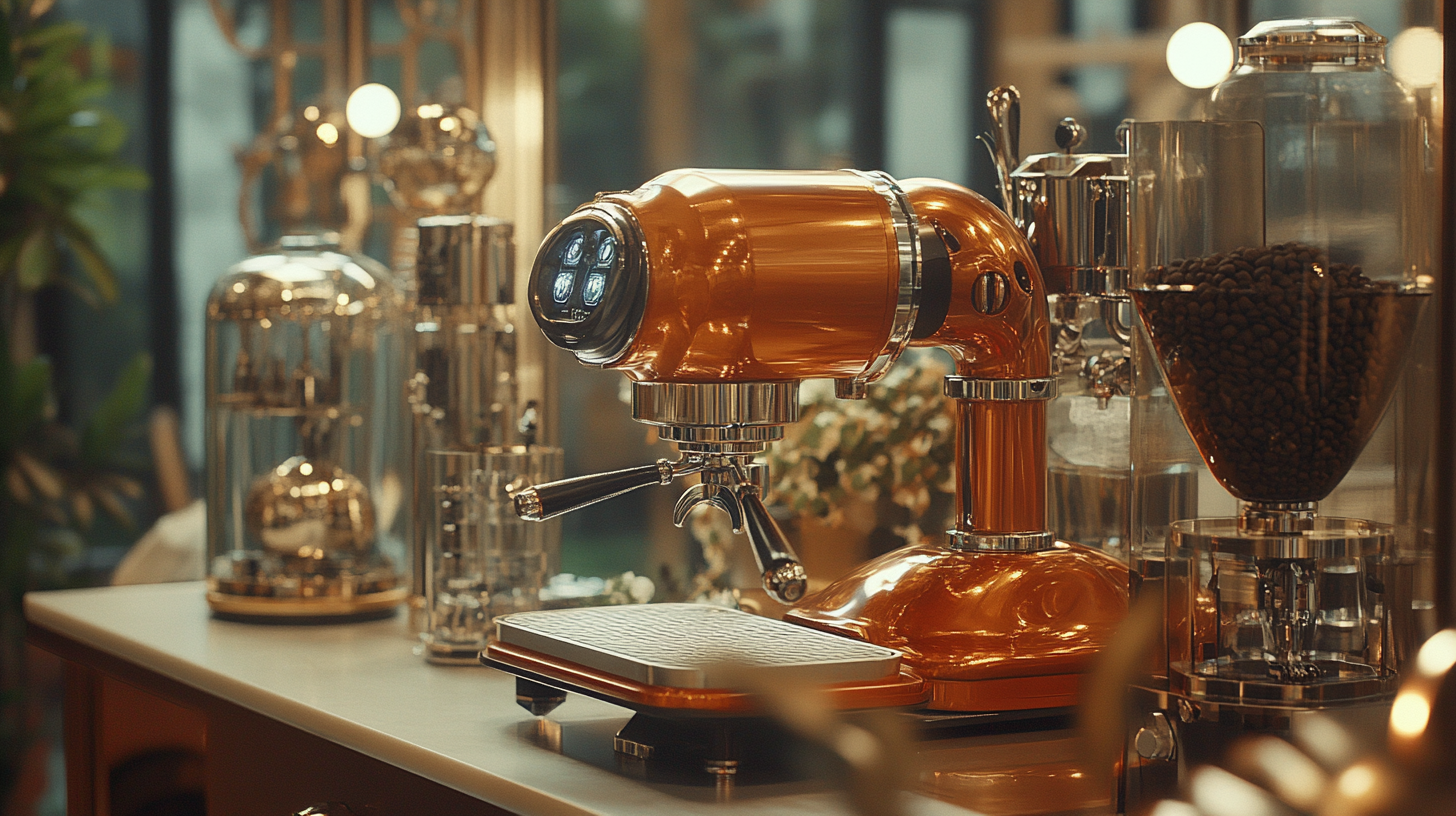

Mastering the Art of Coffee with a Robot Espresso Machine
In recent years, the coffee industry has witnessed a remarkable transformation, with advancements in technology paving the way for innovative brewing methods. Central to this revolution is the rise of the Robot Espresso Machine, a device that combines precision engineering with the artisanal craft of coffee making. According to a recent report by the International Coffee Organization, the global coffee market is projected to grow at a compound annual growth rate (CAGR) of 4.5% from 2021 to 2026, driven by an increasing demand for high-quality coffee experiences. As consumers seek the perfect cup of espresso at home, the integration of robotics into coffee preparation has become not only a novelty but a necessity.
Robot Espresso Machines are designed to deliver consistent quality and replicate the expertise of skilled baristas. A study by the Specialty Coffee Association reveals that 62% of coffee drinkers prefer beverages made with equipment that ensures high accuracy in brewing temperature and pressure. By harnessing advanced algorithms and automated processes, these machines are transforming how coffee enthusiasts engage with their favorite beverage, enabling them to master the art of coffee making with minimal effort. This blog will explore the features and benefits of Robot Espresso Machines, providing insights into how they are redefining the coffee experience for aficionados and novices alike.

The Rise of Robot Espresso Machines: A Revolution in Coffee Brewing
The landscape of coffee brewing is undergoing a remarkable transformation with the advent of robot espresso machines. These innovative devices are designed to bring precision and consistency to the art of coffee-making, appealing not only to professional baristas but also to home enthusiasts. As technology continues to advance, these machines are now capable of replicating complex brewing techniques often reserved for human experts. The result is a coffee experience that combines convenience with quality.
One of the most significant shifts in coffee culture is the democratization of espresso brewing. Traditionally, crafting the perfect espresso involved years of practice and an understanding of intricate variables such as grind size, water temperature, and pressure. Robot espresso machines simplify this process by utilizing sensors and algorithms to monitor and adjust these parameters in real-time. This allows users, regardless of their skill level, to enjoy café-quality coffee in the comfort of their own kitchens.
Moreover, the rise of robot espresso machines has sparked a new interest in coffee exploration. With their ability to program and replicate various brewing profiles, users are encouraged to experiment with different beans and roasts, uncovering a world of flavors previously inaccessible to the average coffee drinker. This revolution not only enhances individual coffee experiences but also fosters a growing community of coffee lovers eager to share their discoveries. The future of coffee brewing is not just about convenience; it’s about connection and creativity, made possible through cutting-edge technology.
Mastering the Art of Coffee: The Rise of Robot Espresso Machines
Understanding the Technology Behind Robotic Barista Systems
As the coffee industry continues to evolve, robotic barista systems have emerged as a groundbreaking innovation that combines advanced technology with our daily caffeine rituals. These machines are part of a growing trend that employs automation to enhance the efficiency and consistency of coffee preparation. According to a report by MarketsandMarkets, the global coffee machine market is projected to grow from $5.8 billion in 2021 to $7.6 billion by 2026, highlighting the increasing demand for advanced coffee-making solutions, including robotic systems.
Robotic espresso machines integrate various technologies, such as artificial intelligence, machine learning, and precision engineering. These systems are designed to replicate the skills of a skilled barista, ensuring that each cup produced meets high-quality standards. Studies have shown that automation can reduce labor costs by up to 35%, while simultaneously increasing production speed and reducing human error in coffee preparation. The integration of sensors and automated brewing techniques allows for real-time adjustments, optimizing flavor extraction and delivering a consistent product.
Moreover, advancements in robotics are not limited to just brewing coffee; they are also extending to customer interaction. Many modern robotic barista systems feature user-friendly interfaces that enable customers to customize their orders, select ingredients, and receive real-time updates on their beverage preparation. According to a report by Statista, the global automation in the food and beverage industry is expected to witness a compound annual growth rate (CAGR) of 7.5%, underscoring the pivotal role that technology plays in enhancing customer service and operational efficiency. As we embrace these cutting-edge innovations, the future of coffee is set to be both technologically sophisticated and delightfully convenient.

Brewing Perfection: Fine-Tuning Your Robot Espresso Machine
Brewing the perfect cup of coffee is an art that increasingly blends the precision of technology with the passion of traditional brewing methods. For enthusiasts looking to master this craft at home, robot espresso machines are becoming game-changers. These machines offer unparalleled consistency, allowing users to fine-tune their brewing parameters to achieve their desired flavor profiles. According to recent industry reports, automated espresso makers are witnessing a surge in demand, with the market expected to grow significantly over the next few years.
To fine-tune your robot espresso machine, it’s essential to understand the key elements that influence extraction quality. Factors such as water temperature, grind size, and pressure all play a critical role. A study highlighted that manipulating water temperature by just a few degrees can alter the extraction of soluble compounds, drastically affecting taste. Similarly, maintaining the ideal grind size is crucial, with research indicating that a coarser grind can lead to under-extraction, while a finer grind risks over-extraction.
With the advent of smart technology, many modern espresso machines incorporate sensors to help baristas and coffee lovers alike achieve brewing perfection. These devices often come equipped with programming features that allow for easy adjustments, making the brewing process more accessible than ever. As many coffee aficionados transition to automated systems, understanding how to fine-tune these machines will be paramount in replicating the café-quality experience at home. Investing time in learning how to utilize these features not only improves your coffee but also enriches the overall brewing journey.
Mastering the Art of Coffee: Robot Espresso Machine Usage
This chart represents the breakdown of different coffee brewing methods used by robot espresso machines in a typical coffee shop.
Comparing Traditional Espresso Techniques with Robotic Brewing
As the coffee renaissance continues to flourish, the debate between traditional espresso-making techniques and the advancements offered by robotic brewing systems intensifies. Traditional espresso preparation is an art form, steeped in centuries of craftsmanship. It requires a deep understanding of the beans, the grind size, the water temperature, and even the pressure applied during extraction. Baristas spend years honing their skills, learning how to create the perfect shot of espresso while mastering the nuances of timing and flavor profiling. The tactile nature of this process allows for creativity and personalization, making each cup unique.
On the other hand, robotic espresso machines bring precision and consistency to the forefront. These machines are programmed to replicate the ideal conditions for brewing, ensuring that every cup maintains the same flavor profile regardless of external variables. While they certainly lack the human touch that a skilled barista provides, their ability to automate complex processes can democratize high-quality coffee for home brewers and establishments alike. Users can simply select their preferred coffee strength and temperature, allowing for a quick and effortless brewing experience that delivers reliable results.
Ultimately, the choice between traditional and robotic methods may come down to personal preference. Some enthusiasts revel in the ritualistic aspects of handcrafting espresso, while others appreciate the efficiency and consistency offered by robotic machines. As technology continues to evolve, we can expect exciting innovations that merge both worlds, potentially creating a future where the artistry of traditional espresso meets the cutting-edge capabilities of robotic brewing systems.
Mastering the Art of Coffee with a Robot Espresso Machine
| Feature | Traditional Espresso Techniques | Robot Espresso Machine |
|---|---|---|
| Brewing Time | Approximately 25-30 seconds | Consistent timing, around 20 seconds |
| Pressure Control | Requires manual adjustment | Automatic, precise pressure adjustments |
| Skill Level Required | High - Requires training and practice | Low - User-friendly interface |
| Consistency | Varies by barista skill | High - Consistent results every time |
| Maintenance | Regular cleaning and calibration required | Automated cleaning cycles |
| Customization | Highly customizable based on user preferences | Limited customization options |
Exploring Innovative Features of Advanced Robot Espresso Makers
The world of espresso making is experiencing a revolutionary transformation with the advent of advanced robot espresso machines. These innovative devices not only streamline the brewing process but also incorporate cutting-edge technology that elevates the coffee experience. From precision temperature control to automated milk frothing, these machines are designed to mimic the skills of professional baristas, ensuring a consistently high-quality cup of coffee with every brew.
One of the standout features of advanced robot espresso makers is their ability to integrate artificial intelligence. Through machine learning algorithms, these robots can adapt to user preferences, honing in on specific tastes and making adjustments to grind size, brew time, and water temperature. This level of customization allows coffee enthusiasts to explore a variety of flavors and intensities, creating a tailored experience that traditional machines simply can't match. Moreover, as the trend of automation grows in various industries, the application of robotics in the culinary world signifies a shift towards efficiency without sacrificing quality.
Additionally, innovations in robotics are increasingly finding their way into the everyday kitchen. With a growing number of companies focusing on advanced robotics for personal and industrial use, the coffee sector is no exception. These advancements not only enhance the functionality of espresso machines but also pave the way for sustainable practices in coffee preparation. As manufacturers continue to innovate, consumers can look forward to machines that are not only smarter but also more environmentally friendly, making specialty coffee brewing accessible and enjoyable for all.
